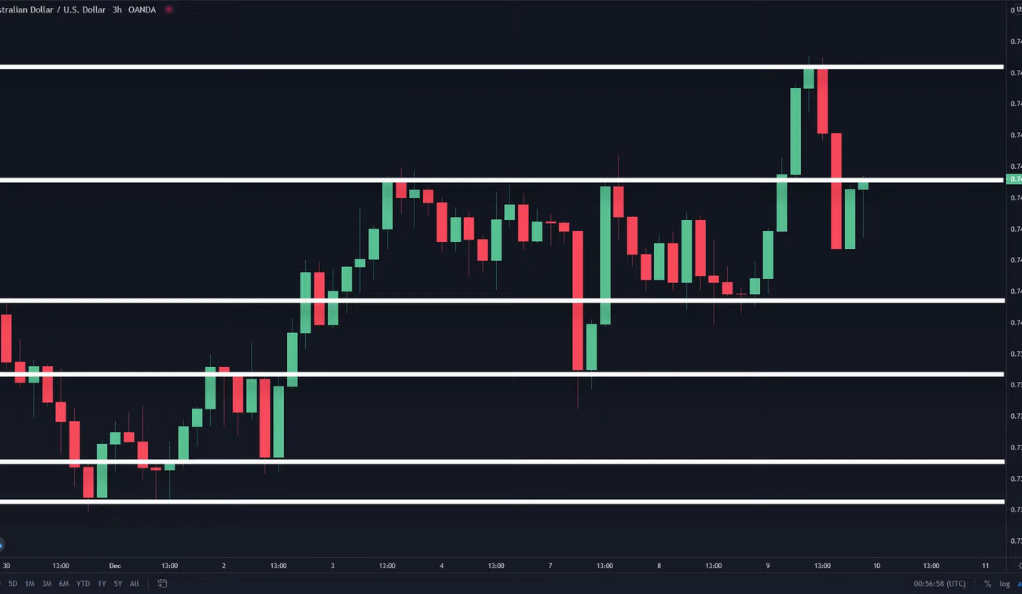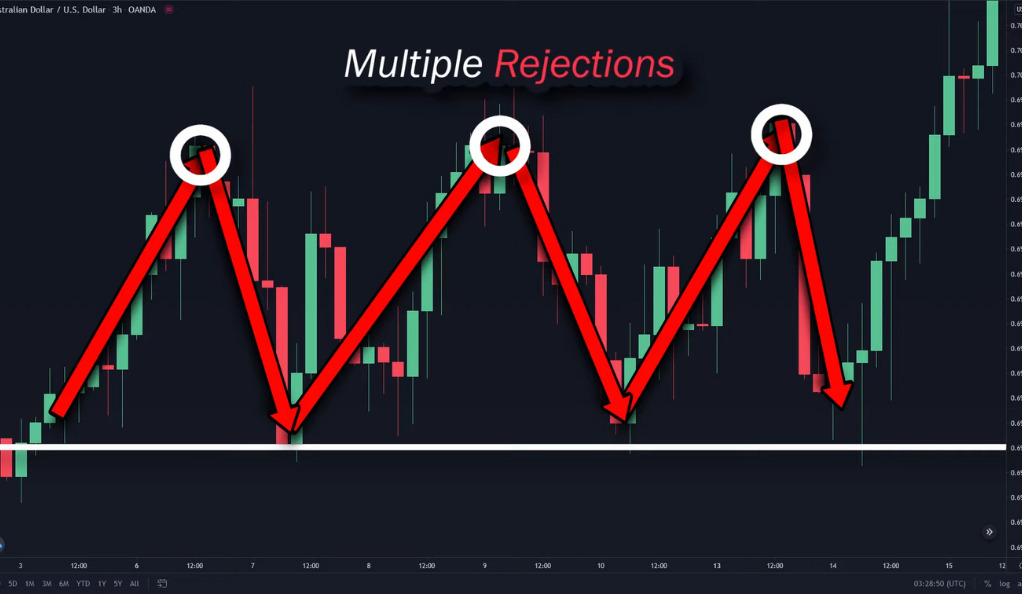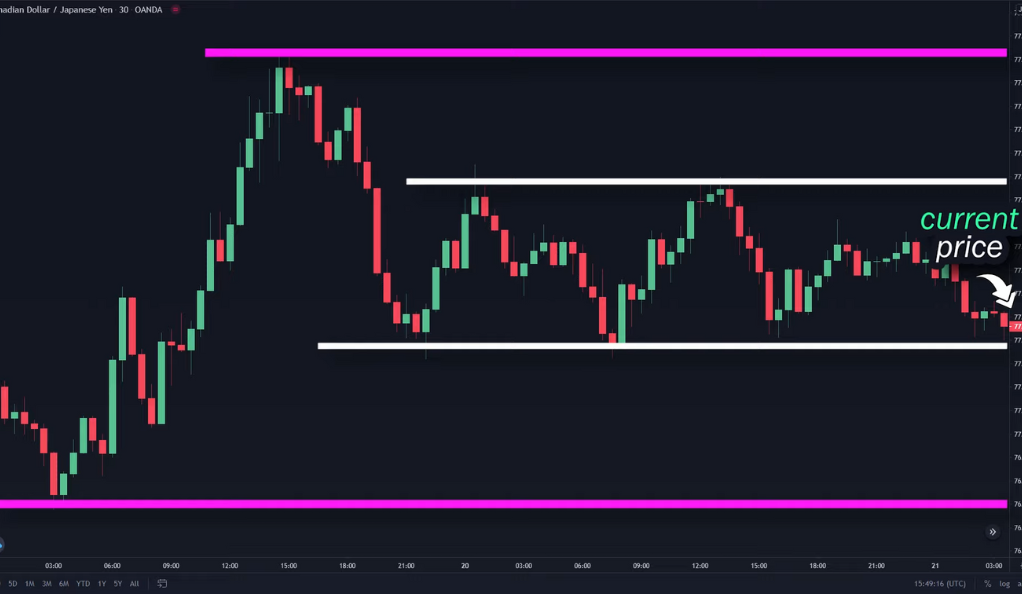Trading in financial markets is a multifaceted endeavor that demands a comprehensive grasp of different strategies and techniques. Among the essential skills to develop in trading, mastering the art of drawing support and resistance lines is paramount. This technique holds immense significance as it presents potential opportunities for high-win rate trades, establishing itself as an indispensable tool in a trader’s toolkit.
Drawing support and resistance lines involves identifying key price levels at which buying (support) or selling (resistance) activity is concentrated. These levels act as psychological barriers in the market, influencing price movements and providing valuable insights for traders. By accurately plotting these lines on price charts, traders can gain a better understanding of market dynamics and make informed decisions about entry and exit points. Support and resistance levels can serve as potential turning points in price trends, offering traders the opportunity to enter trades with favorable risk-reward ratios. Effectively utilizing support and resistance lines enables traders to manage risk more efficiently, optimize trade timing, and enhance their overall trading performance. With diligent practice and analysis, traders can harness the power of support and resistance lines to navigate market trends successfully and increase their chances of achieving profitable trades.
Understanding the Importance of Support and Resistance
Support and resistance hold immense importance in technical analysis as they signify the junctures where the dynamics of supply and demand intersect. These levels act as psychological barriers in the market, influencing price movements and providing valuable insights for traders. When support or resistance levels are identified, they offer potential opportunities for high win-rate trades. For instance, let’s consider a scenario where there is a clearly defined area of resistance, representing a level at which prices have previously risen and then reversed downward. When the price approaches this level again, there is a high likelihood that it will reverse downward once more. This recognition of historical price behavior presents traders with a valuable trade opportunity, underscoring the significance of comprehending and leveraging support and resistance levels in their analysis.

Understanding support and resistance allows traders to make more informed decisions regarding entry and exit points in the market. Support levels represent areas where buying activity is concentrated, often leading to a rebound in prices. On the other hand, resistance levels denote areas where selling activity is concentrated, typically resulting in price reversals. By identifying these levels, traders can strategically plan their trades, manage risk effectively, and enhance the overall success rate of their trading strategies. Recognizing the importance of support and resistance empowers traders to navigate market trends, capitalize on price reversals, and optimize their trading strategies for increased profitability and success.
Avoiding Common Mistakes
A prevalent mistake made by traders is the tendency to draw an excessive number of lines on their charts. This abundance of lines can lead to confusion and counterproductive analysis. The purpose of support and resistance lines is to simplify the trading process, not to overwhelm traders with unnecessary complexity. Hence, it is crucial to exercise discretion when drawing these lines and concentrate on the ones that hold genuine significance.

When plotting support and resistance lines, it is essential to identify the key levels that have been historically relevant and have demonstrated a strong impact on price movements. These levels often correspond to significant highs and lows, trend reversals, or areas where price has repeatedly encountered obstacles. By focusing on these significant levels, traders can enhance the effectiveness of their analysis and decision-making. Streamlining the use of support and resistance lines allows traders to maintain clarity and avoid unnecessary noise in their charts, enabling them to make more informed trading decisions and improve their overall trading performance.
The Golden Rules of Support and Resistance
Golden Rules of Support and Resistance are fundamental guidelines that can greatly enhance a trader’s understanding and utilization of these crucial concepts. First and foremost, one golden rule is to consider that support, once broken, tends to become resistance, and resistance, once broken, often transforms into support. This principle recognizes the tendency for price levels that previously acted as support or resistance to flip roles once they are breached. Traders should be mindful of these role reversals as they can provide valuable insights into potential future price movements and help identify optimal entry and exit points.
Another essential golden rule is to give more weight to stronger support and resistance levels. Not all price levels are created equal, and some carry more significance than others. Strong support and resistance levels are typically characterized by multiple touches or bounces, indicating a higher degree of market consensus. By prioritizing these stronger levels in their analysis, traders can improve the accuracy of their predictions and increase the probability of successful trades. Recognizing the importance of strength in support and resistance levels empowers traders to make more informed decisions and navigate the markets with greater confidence.
Multiple Rejections
A level of support and resistance is validated by multiple rejections. For example, if prices went down to a certain level three times before reversing back up, you can draw a support line there. This rule is based on the principle that the more times a price tests a level of support or resistance without breaking it, the stronger that level is considered.

Drastic Movement from Swing High or Low
The price needs to move away drastically from a swing high or swing low. Even if there aren’t multiple rejections yet, if the price formed a swing high and then moved away from it drastically, you can draw a resistance line there. This rule is based on the idea that significant price movements away from a high or low point can indicate a strong level of support or resistance.
One Line Can Be Both Support and Resistance
A line can serve as both a support and resistance line at the same time. For example, a price formed a level of resistance and then broke past the resistance line and formed multiple rejections again, turning the previous resistance line into a support line. This rule is based on the principle of role reversal, where broken resistance becomes support and vice versa.
Levels Must Be Closest to the Current Price
The levels of support and resistance must be nearest or closest to the current price. You don’t want to pick a zone that is too far away from the current price. This rule is based on the idea that the most relevant levels are those closest to the current price.

Implementing the Rules in Real-Time Trading
After grasping the golden rules of support and resistance, the crucial next step is to apply them in real-time trading. This process entails carefully analyzing different charts and identifying the relevant support and resistance levels based on the established rules. It is essential to exercise discipline and draw only the lines that hold significance, while disregarding those that lack relevance. By adhering to this principle, traders can create cleaner and more comprehensible charts, which can enhance their ability to make informed trading decisions.
Implementing the rules of support and resistance in real-time trading requires continuous monitoring and adjustment. As market conditions evolve, support and resistance levels may shift or become invalidated. Traders should regularly reassess their charts, considering recent price action and any new developments that may impact the validity of identified levels. Being adaptable and responsive to changing market dynamics allows traders to effectively apply the rules of support and resistance, enabling them to make timely adjustments to their trading strategies and improve their overall performance in real-time trading scenarios.
Further Learning
To delve deeper into the subject of entries and exit strategies using support and resistance, it is recommended to explore additional resources or consider enrolling in advanced trading courses. These resources can provide a more comprehensive understanding of the various techniques and methodologies that can be employed in conjunction with support and resistance levels. By expanding your knowledge through these educational avenues, you can gain valuable insights into refining your trading approach and enhancing your ability to identify optimal entry and exit points in the market.
It is important to acknowledge that mastering the art of drawing support and resistance lines is an ongoing learning process. It requires dedication, practice, and a continuous effort to stay informed about market trends and dynamics. By remaining open to learning and actively seeking opportunities to expand your knowledge, you can refine your trading skills and develop a nuanced understanding of how support and resistance can be effectively utilized in different market conditions. Embracing a lifelong learning mindset is crucial for traders to adapt to changing market environments and improve their overall trading performance over time.
Conclusion
In conclusion, support and resistance are fundamental concepts in trading that can significantly enhance your trading strategy when understood and applied correctly. By avoiding common mistakes and adhering to the golden rules of support and resistance, you can make more informed trading decisions and potentially increase your chances of success in the financial markets.
Ainu Token aims to offer impartial and trustworthy information on cryptocurrency, finance, trading, and shares. However, we don't provide financial advice and recommend users to conduct their own studies and thorough checks.

Comments (No)